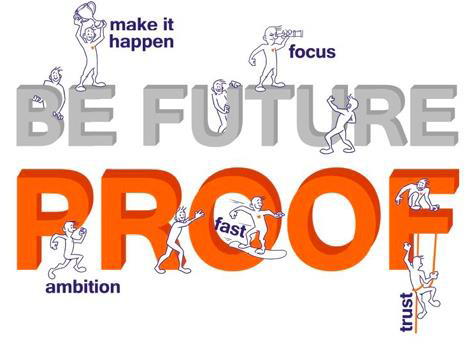Learning, training and communication (both internal and external) initiatives and techniques that make use of storytelling in companies are changing and becoming more frequently used. Storytelling is a method that includes the telling, construction and sharing of stories and experiences, which can also be autobiographical, both from management and from employees (Fontana, 2011). Storytelling, therefore, is an innovative way to convey values and facilitate change through stories: we experimented with it in 2013 with the Be Future Proof project, a course for internal communication aimed at all Wind employees and finalised to encourage knowledge and internalisation of company values and of key behaviours tied to these. At the root of this trend are the studies made on communities of practice developed in the 1990s: the experiences of repair technicians of Xerox photocopiers – the research subject of John Seely Brouwn and Paul Duguid (1991) – show the potential inherent in talking together and sharing stories for socialising experiences, externalising tacit knowledge, innovating well-established organisational practices (Mormino, 2011). As well as being a tool for managing knowledge, stories also represent a precious resource for stimulating sense-making processes and, therefore, for building shared meanings and identities: storytelling, in fact, becomes a way of giving a sense, a form, to what is experienced daily within a company. Moreover, there is no doubt that the new technology and tools of Web 2.0 offer, today more than ever before, enormous opportunities within a company to talk about and share stories and experiences, both with colleagues who are geographically dispersed and with clients or external partners.  In fact, in our case, the employees of Wind (about 6,950 people) were involved via the company’s intranet in participatory initiatives of a social nature which included, among others, the use of storytelling both intext form and in images and videos (the so-called digital storytelling), starting from 5 values: Trust, Ambition, Make it Happen, Fast and Focus. Some examples? In Tell us a story the participants were asked to recount positive episodes tied to the application of the value “trust” in all its aspects. In We are the protagonists the meaning given to the value “ambition” was shared through videos and films created by the participants. As well as the possibility to publish their contributions (in story or video form, etc) the project also provided the chance to vote for their favourite content and indicate them to one or more colleagues. Here are some of the results that were obtained: 330 published stories 1,300 “authors” 16,500 “readers” and 7,600 “likes” for the 5 activities planned during the year.
In fact, in our case, the employees of Wind (about 6,950 people) were involved via the company’s intranet in participatory initiatives of a social nature which included, among others, the use of storytelling both intext form and in images and videos (the so-called digital storytelling), starting from 5 values: Trust, Ambition, Make it Happen, Fast and Focus. Some examples? In Tell us a story the participants were asked to recount positive episodes tied to the application of the value “trust” in all its aspects. In We are the protagonists the meaning given to the value “ambition” was shared through videos and films created by the participants. As well as the possibility to publish their contributions (in story or video form, etc) the project also provided the chance to vote for their favourite content and indicate them to one or more colleagues. Here are some of the results that were obtained: 330 published stories 1,300 “authors” 16,500 “readers” and 7,600 “likes” for the 5 activities planned during the year.  The positive outcomes and the level of participation encountered during this experience support, therefore, the idea that we can facilitate change, including cultural change, starting from and giving voice to the people in the company. Sara Mormino References
The positive outcomes and the level of participation encountered during this experience support, therefore, the idea that we can facilitate change, including cultural change, starting from and giving voice to the people in the company. Sara Mormino References
- Fontana A. (2011) “Storytelling Management”in Boldizzoni D. e Nacamulli R.C.D. (a cura di) (ed. 2011) Oltre l’aula, Apogeo Milano.
- Brown J.S. e Duguid P. (1991), “Organizational Learning and Communities of Practices: Toward an unified view of working, learning and innovation”, Organization Science, 2(1): 40-57.
- Mormino S. (2011), Together. Team working, processi collaborativi, comunità professionali, nell’organizzazione postfordista, Polimata, Roma.